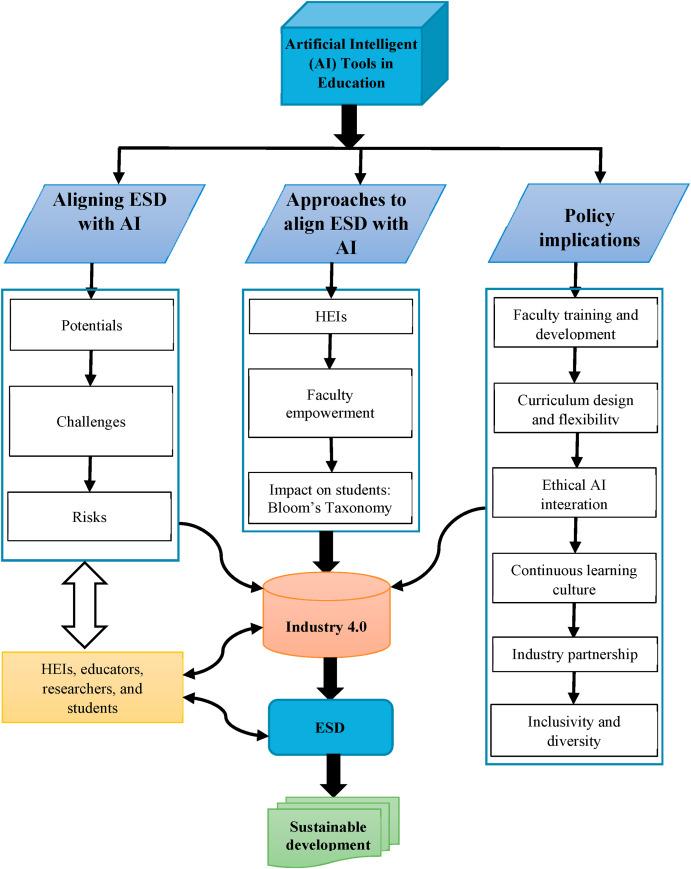Ethical Considerations of AI in Education: Navigating Opportunities and Risks
Introduction: AI’s Growing Role in Modern Education
Artificial Intelligence (AI) is revolutionizing every sector, and education is no exception. From personalized learning paths and bright tutoring systems to automated grading and predictive analytics, AI technology is changing how educators teach and students learn. Though, this surge of innovation calls for a careful examination of the ethical considerations of AI in education. As schools, universities, and edtech companies embrace AI, it is crucial to weigh the vast opportunities against emerging risks to ensure that the digital classroom remains a place of fairness, safety, and empowerment.
Opportunities Presented by AI in Education
AI brings numerous advantages to the educational landscape. When leveraged responsibly, it can advance teaching and learning in powerful ways:
- Personalized Learning: AI adapts to individual student needs, providing customized resources, recommendations, and feedback based on performance data.
- Accessibility: AI-powered tools support students with disabilities, offering real-time speech-to-text, language translation, and adaptive learning environments.
- Efficient Administration: Automating administrative tasks—attendance, grading, scheduling—frees up teachers to focus on instruction and student engagement.
- Data-Driven Insights: Predictive analytics can identify at-risk students and recommend timely interventions, improving retention and outcomes.
- Scalability: Online courses and intelligent virtual assistants can reach more learners globally, bridging gaps in education access.
Key Ethical Considerations of AI in Education
Despite its potential, AI raises notable ethical issues in the classroom that demand thoughtful discussion and proactive management. Below are the most pressing concerns:
1. Data Privacy and Security
- Student Data Protection: AI systems depend on large volumes of sensitive student data. Strong data governance and compliance with regulations like GDPR and FERPA are essential.
- Cybersecurity Threats: Educational institutions are common targets for cyber attacks.Data breaches can expose personal and academic records.
2. Algorithmic Bias and Fairness
- Implicit Bias: AI algorithms may unintentionally replicate human biases if training data is unbalanced or unrepresentative.
- Equity of Chance: Biased AI systems could disadvantage certain demographics, reinforcing educational inequalities rather than leveling the playing field.
3. Clarity and Accountability
- Explainability: Many AI decisions are made via ‘black box’ models, making it hard for students, teachers, and parents to understand or challenge outcomes.
- Oversight: Clear guidelines are needed to determine who is responsible when AI systems make mistakes or produce harmful results.
4. Student Autonomy and Agency
- Human Judgment: Over-reliance on AI may reduce critical thinking and undermine teacher-student trust.
- Informed Consent: Students and guardians should have control over what data is collected and how it’s used.
5. Psychological and Social Impact
- Well-being: Over-monitoring and predictive assessments may increase anxiety or label students unfairly.
- Teacher Roles: There is a risk of devaluing human mentorship and emotional intelligence, wich are vital for holistic progress.
case Studies: Real-World Applications and Challenges
To better understand the ethical considerations of AI in education,let’s look at some notable examples from schools and universities worldwide:
Case Study 1: Predictive Analytics in U.S.Colleges
Many U.S.colleges use AI-powered analytics to identify students who are ‘at risk’ of dropping out. While this enables timely support, concerns arose when students were categorized based on socioeconomic factors, perhaps cementing cycles of disadvantage.
Case Study 2: Automated Essay Grading in the UK
Several UK schools adopted AI-driven essay graders for standardized assessments. Teachers praised the increased efficiency, but studies found that the algorithms sometimes penalized creative responses or nuanced language not present in ancient data.
Case Study 3: Adaptive Learning in Asia
Large Asian e-learning platforms integrated AI to deliver adaptive homework assignments. While student performance improved, parents raised questions about how much data was being collected and whether children’s learning styles were being oversimplified.
Practical Tips for Implementing Ethical AI in Education
For educational leaders and teachers considering AI adoption, here are some best practices to navigate the opportunities and risks involved:
- Champion Transparency: Clearly communicate how AI tools work, what data they use, and how decisions are made.
- Audit for Bias: Regularly review AI systems for discriminatory outcomes, especially against marginalized groups.
- Prioritize Data Privacy: Employ robust cybersecurity measures and obtain informed consent from users.
- Keep Humans in the Loop: Use AI to augment, not replace, human judgment. Ensure that educators validate and contextualize AI-driven recommendations.
- Foster Digital Literacy: Educate students, teachers, and parents about AI basics and ethical issues to empower informed decision-making.
- Establish Clear Policies: Adopt ethical AI guidelines that outline acceptable uses, responsibilities, and redress mechanisms for incorrect or harmful outcomes.
Balancing Innovation and Responsibility: Looking Ahead
The future of AI in education is luminous, but its success hinges on our ability to balance innovation with ethical stewardship. Policymakers, edtech developers, and educators must collaborate to craft a robust ethical framework that adapts as technology evolves. Continuous dialog with teachers,students,and guardians ensures that emerging risks are identified early and addressed proactively.
- Invest in ongoing research to anticipate new ethical dilemmas.
- Foster cross-disciplinary partnerships between technologists, educators, ethicists, and policymakers.
- Place student well-being, autonomy, and dignity at the center of every AI initiative.
Conclusion: Shaping a Responsible Future for AI in Education
As AI transforms the digital classroom, ethical considerations must remain at the forefront of every technological decision. By understanding both the measurable benefits and the nuanced risks, educational communities can harness AI for positive, equitable change. Through thoughtful policy, open communication, and a shared commitment to student welfare, we can create learning environments that are not only smarter but also fairer, more secure, and truly inclusive.
The journey of integrating AI in education has just begun—let’s ensure it’s guided by both innovation and integrity.

